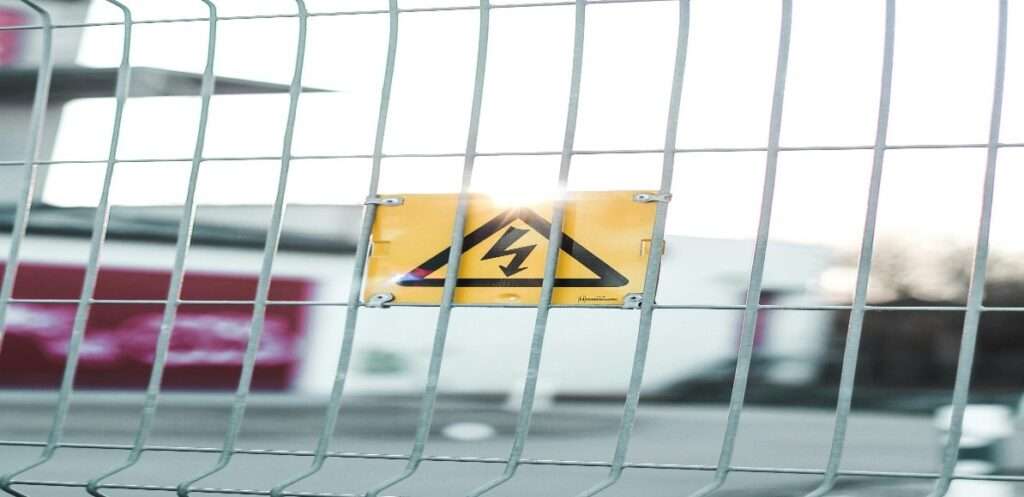Comprehensive Guide to Electrical Safety Rules for Industries in India
TABLE OF CONTENTS
- Electrical safety rules in India for industries
- Indian Electricity Rules 1956 – statutory requirements
- Electrical Safety Checklist
- Reinforcing safety protocols and promoting awareness
- Why is Electrical Safety Important?
Preventing electrical accidents is one of the prerequisites for any business. Whether you are installing any electrical equipment or working with electrical devices, you must follow general electrical safety rules. In India, industries need to follow the Indian Electricity Rules 1956, which was last revised in 2020.
Electrical safety rules in India for industries
There are many rules under the Indian Electrical Standards and Indian Electricity Rule 1956. And if you run a business in India, you must have a thorough knowledge of the various legal obligations which are related to electrical safety. But reading all the rules is a time-consuming and tedious process. So, here is a comprehensive list of the most important Indian electricity rules that you need to keep in mind to ensure safe business operations. Some of the points also cover the legalities associated with the rules.

Indian Electricity Rules 1956 – statutory requirements
Let us check out the statutory rules for electrical safety in India:
Indian Electricity Rule – 29
All electrical apparatus and supply lines should be of appropriate ratings.
Indian Electricity Rule – 30
As per this rule, all wires, devices, accessories, and power supply lines should be kept in safe conditions. They should also be able to supply energy while being free from any kind of danger.
Underground electrical lines should be well-protected and duly insulated. Industries must also ensure that even if there is any kind of damage to the insulation – chemical, electrical, or mechanical, the line must remain secure under all conditions.
Indian Electricity Rule – 32
Proper and appropriate identification is a must for a grounded and earthed neutral conductor. Also, the position of the circuit breakers and the switches must be ensured.
Indian Electricity Rule – 33
It is mandatory to provide and maintain a suitable earth terminal at an accessible position, preferably near the start point of the supply line.
Indian Electricity Rule – 34
Bare conductors are used in many places for different requirements. Industries should make sure that these bare conductors are inaccessible. It is best if they can be fitted with switches so that they can be turned off whenever required. This switch position should be easily accessible.
Indian Electricity Rule – 35
All medium, high, and very high voltage installations must have a danger notice written in English or Hindi and the local language of the place. There should also be a skull and bone sign indicating danger in the installation area. The skull and bone sign should be made as per specifications in IS No. 2551.
Indian Electricity Rule – 36
Any worker working on an electrical device or an electrical power line must use proper safety tools and devices like rubber shoes, gloves, ladders, helmets, seat belts, hand lamps, line testers, and so on. These tools protect against electrical or mechanical injury. Employers should make sure that these tools are well-maintained and in proper working conditions.
Along with the required safety tools, no person will work on live electrical supply lines or devices without proper authorization.
Indian Electricity Rule- 37
Overhead cranes are very useful but should be used very carefully. Overhead cranes are mostly powered by some external source. There must be an appropriate cut-off switch to cut off voltage at once when required. Also, the complete structure of overhead cranes must be grounded properly.
Indian Electricity Rule – 38
Industries must refrain from using flexible cables for transformers, electric drills, generators, motors, welding stations, rectifiers, electric sprayers, and similar devices. However, if the flexible cables have strong insulation and adequate protection against mechanical damage, they can be used.
Indian Electricity Rule – 43
Adequate arrangements must be available for combating electrical fires. Proper fire-fighting devices must be installed and maintained. Industries must ensure the availability of personal protective equipment and a first aid kit.
Indian Electricity Rule – 46
Proper testing and inspection of all electrical installations by a licensed electrical inspector should be made mandatory at periodic intervals. The inspection should be scheduled at least every 5 years.
Indian Electricity Rule – 61A
There must be an earth leakage protection device wherever necessary.
Indian Electricity Rule – 67
Very high and high voltage installations often have many non-current-carrying parts. All these parts should be earthed effectively to a proper earthing system.
Indian Electricity Rule – 91
Any overhead line in a public place or any part of the street must be protected with an appropriate device.
Indian Electricity Rule – 92
The ground wire of a surge arrester should never pass through any steel or iron pipe. It is best conducted directly from the surge arrester to a separate earth electrode.
The above list has some of the most important electrical safety rules in India that industries must follow.
Electrical Safety Checklist
In an industrial capacity safety holds an important role. It is crucial for the well-being of the employees, prevents accidents and mishaps, enhances the productivity and morale of the employees, and mitigates the risks of costly legal liabilities. Overall, a strong safety culture in industries fosters a healthier and more effective workplace. Talking about electrical safety in industries, one needs to be aware of various aspects to achieve that. Let’s see a few items on the electrical safety checklist that ensure a secure workplace and prevent electrical hazards.
- Regular equipment inspection for probable wear, damage, or overheating.
- Verify the functionality of circuit breakers and fuses to ensure circuit protection from overloading.
- Keep electrical panels accessible and free from obstructions.
- See that all emergency protocols and procedures are intact.
- Ensure the availability and functionality of emergency shut-off switches.
- Provide training and awareness programs for employees on electrical safety protocols.
- Ensure the availability and proper use of PPE, such as insulated gloves and safety goggles.
- Communicate and implement lockout/tagout procedures during maintenance to prevent accidental activation of electrical systems.
- Schedule routine electrical inspections by qualified professionals to address and promptly rectify the issues, if any.
- Electrical Safety Signs and Posters
- Add Relevant Image with Alt tag: Electrical Safety Signs and Posters
Reinforcing safety protocols and promoting awareness
Every workplace has certain protocols in place. They hold great importance for the smooth functioning of a workspace. Such are safety signs and posters in the electrical industry. These are placed to help employees during any calamity/accident or otherwise. Effective electrical safety signs and posters serve as constant reminders, reinforcing safety protocols and promoting a culture of awareness. These visual cues contribute to the overall safety culture, reducing the risk of electrical accidents and creating a secure workplace for all personnel.
Let us have a look at some of the electrical safety signs and posters.
- Various warning signals to notify personnel about dangerous areas like high voltage areas, electrical shock hazards, etc.

- Equipment guidelines that provide signs indicating proper usage, maintenance, precautions and importance of PPE to be used for protection against electrical accidents.

- Display posters outlining emergency response procedures for electrical incidents, including evacuation routes and emergency shutdown protocols.

- Lockout/tagout procedures to prevent accidental activation of electrical systems during maintenance.
- Posters reminding workers to report electrical issues promptly, perform regular equipment inspections, and follow established safety protocols.
Why is Electrical Safety Important?
The safety of employees is crucial for any workspace, irrespective of industry. But there are certain industries where one needs to be extra careful about the overall safety and well-being of the workspace and employees. One such industry is the electrical industry. Electrical safety is indispensable for preserving human life, safeguarding property, maintaining operational continuity, and complying with legal requirements. Prioritizing electrical safety contributes to a secure and efficient working environment, benefiting both individuals and organizations in the long run.
Furthermore, prioritizing electrical safety is essential for maintaining a compliant and legally sound workplace. Adhering to safety regulations and standards helps avoid penalties, fines, and legal liabilities. It also fosters a positive work environment, boosting employee morale and productivity. Regular training and awareness initiatives promote safe practices, reducing the likelihood of accidents.
FAQs
What are the essential statutory requirements for electrical safety in Indian industries?
Key statutory requirements under the Indian Electricity Rules 1956 include:
- Rule 29: Electrical apparatus and supply lines must be appropriately rated.
- Rule 30: Wires, devices, and power lines must be kept safe and able to supply energy without danger.
- Rule 32: Grounded and earthed neutral conductors must be properly identified.
- Rule 33: Maintain a suitable earth terminal at an accessible position.
- Rule 34: Bare conductors should be inaccessible and have easily accessible switch positions.
- Rule 35: Danger notices in multiple languages with skull and bone signs are required for high-voltage installations.
What safety tools and procedures are mandated for workers handling electrical equipment?
According to Rule 36, workers must use safety tools and devices like rubber shoes, gloves, ladders, helmets, and hand lamps. These tools must be well-maintained and in proper working condition. No person should work on live electrical lines or devices without proper authorization.
How often should electrical installations be inspected, and by whom?
Rule 46 mandates that all electrical installations must be inspected and tested by a licensed electrical inspector at least every five years. This ensures ongoing compliance with safety standards and the identification of potential hazards.
What are the requirements for overhead cranes in terms of electrical safety?
Rule 37 specifies that overhead cranes must have an appropriate cut-off switch to quickly cut off voltage when needed. The entire structure of the crane must be properly grounded to prevent electrical hazards.
How should industries manage electrical fires and ensure the safety of their electrical installations?
Rule 43 requires industries to have adequate arrangements for combating electrical fires. This includes installing and maintaining proper fire-fighting devices, ensuring the availability of personal protective equipment, and keeping a well-stocked first aid kit. Regular training and awareness programs on fire safety should also be conducted.







